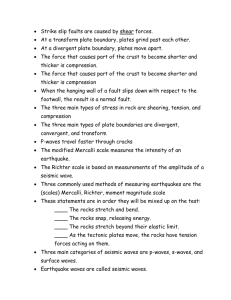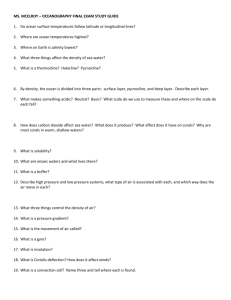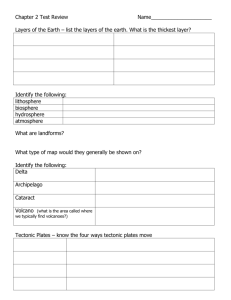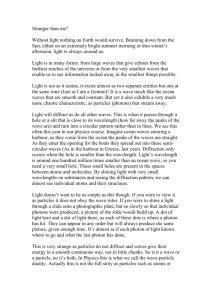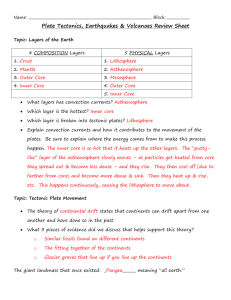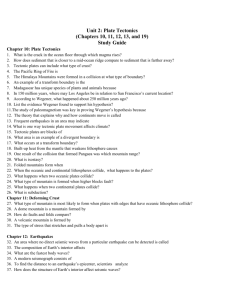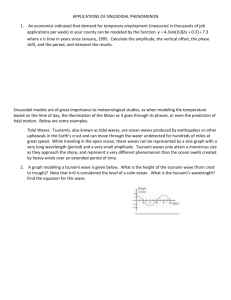End of Natural Disasters Unit TEST Study Guide
advertisement
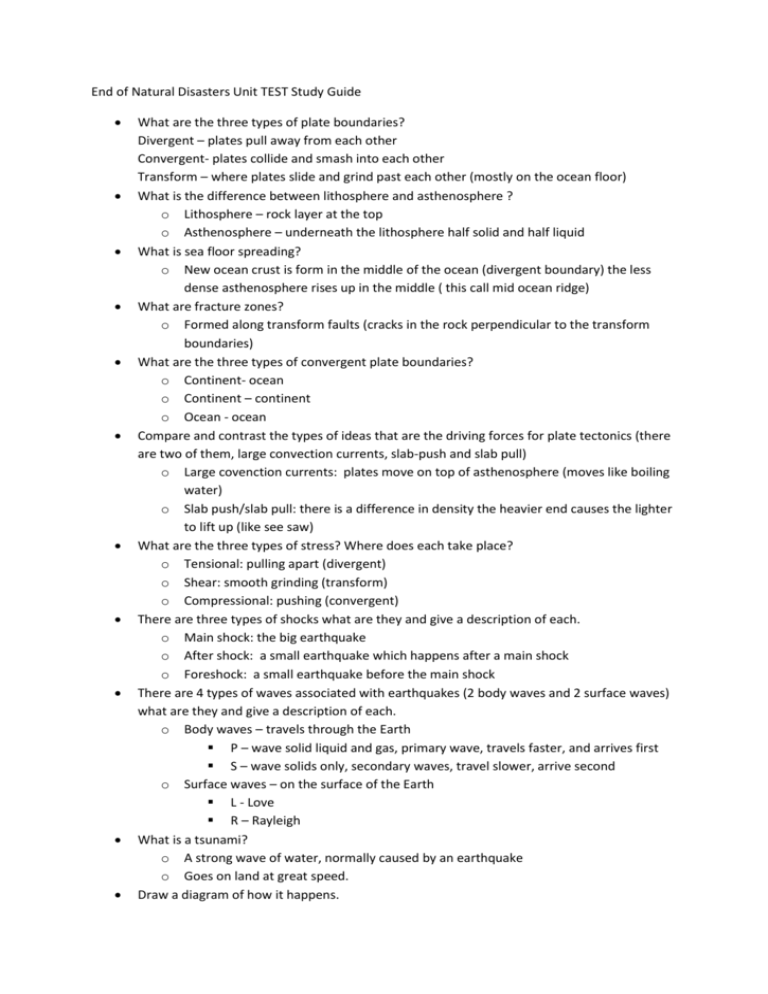
End of Natural Disasters Unit TEST Study Guide What are the three types of plate boundaries? Divergent – plates pull away from each other Convergent- plates collide and smash into each other Transform – where plates slide and grind past each other (mostly on the ocean floor) What is the difference between lithosphere and asthenosphere ? o Lithosphere – rock layer at the top o Asthenosphere – underneath the lithosphere half solid and half liquid What is sea floor spreading? o New ocean crust is form in the middle of the ocean (divergent boundary) the less dense asthenosphere rises up in the middle ( this call mid ocean ridge) What are fracture zones? o Formed along transform faults (cracks in the rock perpendicular to the transform boundaries) What are the three types of convergent plate boundaries? o Continent- ocean o Continent – continent o Ocean - ocean Compare and contrast the types of ideas that are the driving forces for plate tectonics (there are two of them, large convection currents, slab-push and slab pull) o Large covenction currents: plates move on top of asthenosphere (moves like boiling water) o Slab push/slab pull: there is a difference in density the heavier end causes the lighter to lift up (like see saw) What are the three types of stress? Where does each take place? o Tensional: pulling apart (divergent) o Shear: smooth grinding (transform) o Compressional: pushing (convergent) There are three types of shocks what are they and give a description of each. o Main shock: the big earthquake o After shock: a small earthquake which happens after a main shock o Foreshock: a small earthquake before the main shock There are 4 types of waves associated with earthquakes (2 body waves and 2 surface waves) what are they and give a description of each. o Body waves – travels through the Earth P – wave solid liquid and gas, primary wave, travels faster, and arrives first S – wave solids only, secondary waves, travel slower, arrive second o Surface waves – on the surface of the Earth L - Love R – Rayleigh What is a tsunami? o A strong wave of water, normally caused by an earthquake o Goes on land at great speed. Draw a diagram of how it happens. What are the three types of volcanoes, give an example of each, draw a diagram and give a brief description o Cinder cone volcano smaller looks like a cylinder Fugi small crater o Sheildvolcano; wide not tall, not explosive Iceland o Composite Volcano: round big crater in the middle What is a hurricane? What are the conditions that allow them to form? o A really big storm (strong wind and rain) travel counterclockwise o Warm water, at least 5 degrees north or south of equator, low pressure When is hurricane season? o June 1 – November 30 What are terms used to describe the development of a hurricane? o Tropical storm o Tropical depression o Tropical wave o Tropical disturbance How are hurricanes measured? o Wind speed, pressure Be able to give an example of each type of natural disaster and discuss the result.
